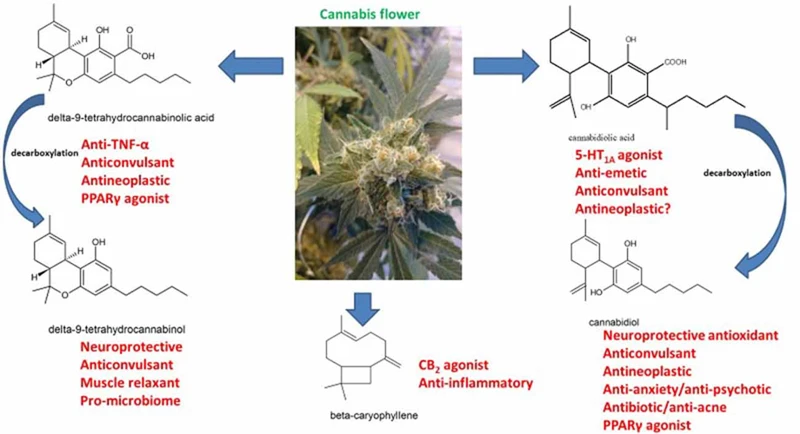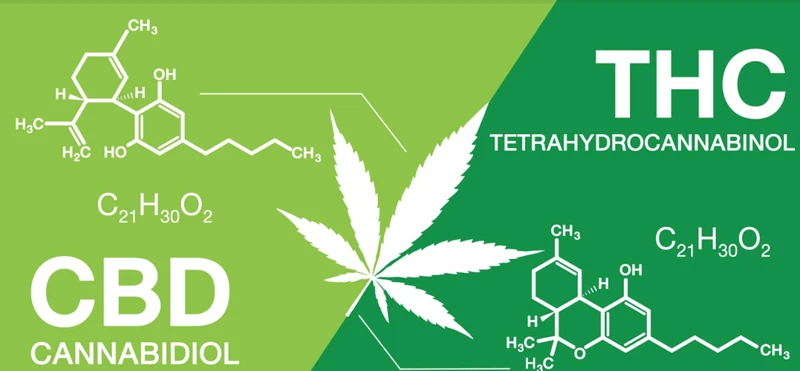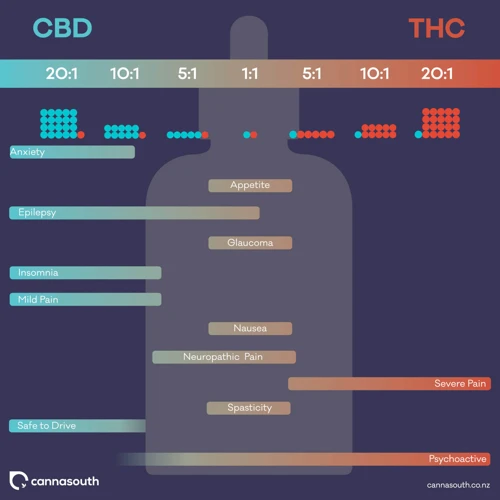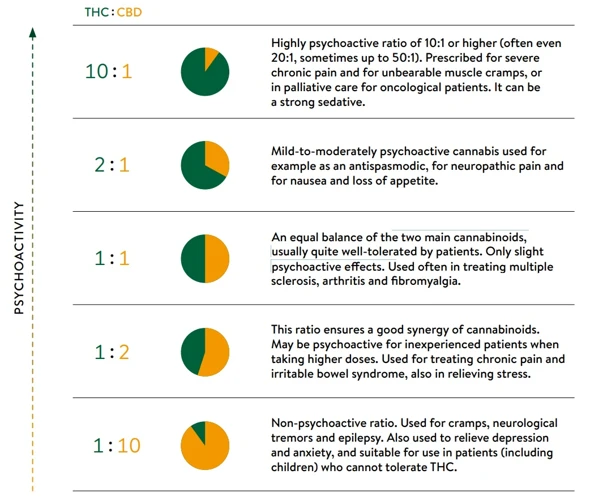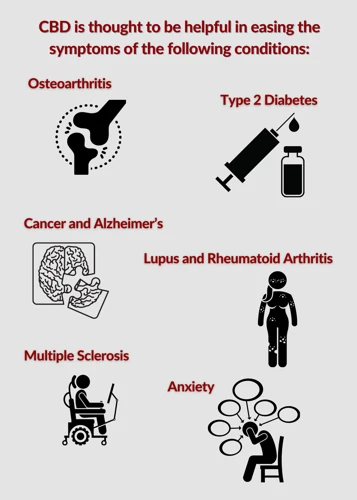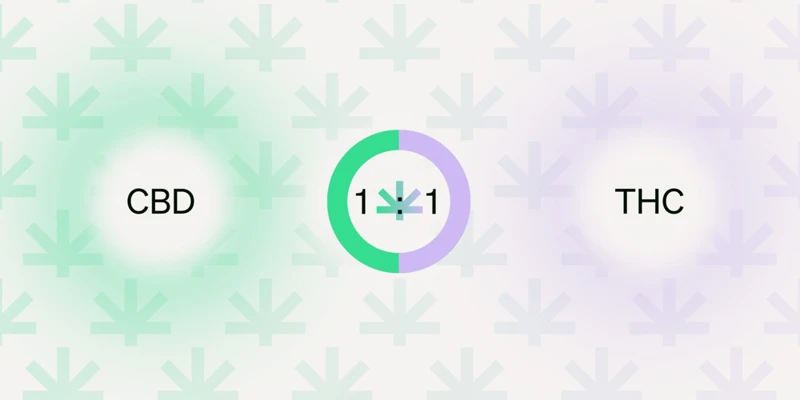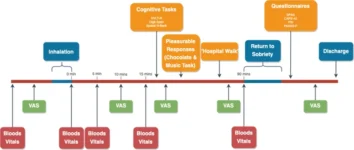
Understanding the Role of THC/CBD Ratios in Treating Neurological Disorders
Neurological disorders affect millions of people worldwide and can have a significant impact on their daily lives. While traditional treatments may provide some relief, many individuals are turning to alternative therapies such as using cannabinoids to manage their symptoms. However, the effectiveness of these treatments relies heavily on the THC/CBD ratio used. Understanding the science behind these ratios and their impact on the treatment of neurological disorders can be perplexing. In this article, we will explore the different types of neurological disorders, the science of THC and CBD ratios, the impact of these ratios on treatment, and safety considerations. We will also discuss administration methods and choosing the appropriate ratio for individual needs.
Overview of Neurological Disorders
Contents
Neurological disorders are complex conditions that can be difficult to manage. They affect the brain, spinal cord, and nerves throughout the body, leading to a variety of symptoms and complications. From seizures and tremors to memory loss and muscle weakness, the impact of neurological disorders on patients can be profound. However, recent research suggests that THC/CBD ratios may hold promise in treating these conditions. To learn more about the importance of THC/CBD ratios for neurological disorders and how to choose the right strain, continue reading or jump to our guide on how to choose the appropriate THC/CBD ratio.
Common Types of Neurological Disorders
Neurological disorders affect the brain, spinal cord and nerves throughout the body. These disorders can cause a wide range of symptoms, including muscle weakness, tremors, seizures, pain and cognitive impairment. According to the World Health Organization (WHO), neurological disorders affect up to 1 billion people worldwide. Here are some of the most common neurological disorders:
| Disorder | Symptoms |
|---|---|
| Epilepsy | Seizures, loss of consciousness, convulsions, muscle spasms |
| Multiple Sclerosis | Fatigue, weakness, balance problems, vision changes, cognitive impairment |
| Parkinson’s Disease | Tremors, stiffness, slow movement, balance problems, cognitive impairment |
| Alzheimer’s Disease | Memory loss, confusion, cognitive decline, mood changes, difficulty with daily tasks |
| Migraines | Severe headaches, nausea, sensitivity to light and sound, visual disturbances |
Other neurological disorders include: ALS (Amyotrophic lateral sclerosis), Huntington’s disease, Tourette’s syndrome, cerebral palsy, and neuropathy (nerve damage).
It’s important to note that not all neurological disorders can be treated with THC/CBD ratios or cannabis in general. However, some disorders have shown to benefit from cannabis-based treatments, as discussed in the following sections of this article.
For more information on choosing the appropriate THC/CBD ratios based on the specific neurological disorder and strain, check out our article on the Importance of THC/CBD Ratios in Choosing the Right Strain.
Symptoms and Treatment Options
Neurological disorders can have a wide range of symptoms, which vary depending on the specific condition. Some common symptoms of neurological disorders include:
- Difficulty walking or moving
- Tremors or shaking
- Muscle weakness or spasms
- Numbness or tingling
- Seizures or convulsions
- Mood changes, such as depression or anxiety
- Memory loss or cognitive decline
Treatment options for neurological disorders also vary depending on the condition, as well as the severity and frequency of symptoms. Some common treatments include:
- Pharmaceutical medications
- Physical therapy or rehabilitation
- Surgery
- Lifestyle changes, such as exercise and diet modifications
- Alternative therapies, such as acupuncture or massage
- Cannabis-based treatments, including the use of THC/CBD ratios
It’s important to work with a healthcare provider to determine the best course of treatment for your specific neurological condition. While cannabis-based treatments may be effective for certain individuals, they may not be appropriate or effective for everyone. By taking a holistic approach to treatment, incorporating multiple modalities and considering individual factors, patients can achieve the best possible outcomes in the management of their neurological disorder.
The Science of THC/CBD Ratios
Understanding the science behind the THC/CBD ratios is crucial in determining their therapeutic benefits for treating neurological disorders. THC (tetrahydrocannabinol) and CBD (cannabidiol) are two of the most prominent cannabinoids found in the cannabis plant that interact with the body’s endocannabinoid system. Their ratios play a vital role in achieving the desired therapeutic effects for different medical conditions. In this section, we will delve into the intricacies of the science behind THC/CBD ratios and how they can influence the effectiveness of cannabis-based therapies for neurological disorders.
THC vs. CBD
THC vs. CBD
THC (tetrahydrocannabinol) and CBD (cannabidiol) are two of the most well-known and studied cannabinoids found in the cannabis plant. While they share some similarities, there are some key differences between the two.
| THC | CBD |
|---|---|
| Psychoactive compound | Non-psychoactive compound |
| Binds to CB1 receptors in the brain | Does not bind strongly to CB1 or CB2 receptors, but affects other receptors and enzymes in the body |
| Produces a “high” or euphoric feeling | Does not produce a “high,” but can provide a mild sense of relaxation |
| Can cause short-term side effects such as increased heart rate, dry mouth, and impaired coordination | Generally well-tolerated and does not typically cause significant side effects |
| May have some medicinal benefits such as pain relief, inflammation reduction, and anti-nausea effects | May have a range of medicinal benefits including reducing anxiety, antipsychotic effects, and anti-seizure properties |
It’s important to understand the differences between THC and CBD, as they can have vastly different effects on the body and mind. THC is the psychoactive compound responsible for the “high” associated with marijuana use, while CBD is not psychoactive and is known for its medicinal uses. Each compound interacts with the body differently, which is why it’s essential to consider the THC/CBD ratio when treating neurological conditions.
The Entourage Effect
The Entourage Effect refers to the idea that the synergy between different components in the cannabis plant, including THC and CBD, as well as other cannabinoids, terpenes, and flavonoids, can lead to more effective therapeutic outcomes than isolated compounds. This concept was first introduced in a 1998 study by Israeli scientists, Raphael Mechoulam and Shimon Ben-Shabat.
Here are some key points to understand the Entourage Effect:
- THC and CBD have different effects on the body, and they can work together to provide greater medicinal benefits than when used alone. For example, THC is known for its pain-relieving and anti-inflammatory properties, while CBD can help reduce anxiety, seizures, and psychosis.
- Other cannabinoids, such as CBG and CBN, also play a role in the Entourage Effect. CBG has been shown to have anti-inflammatory and neuroprotective effects, while CBN has a mild sedative effect and may help with insomnia.
- Terpenes are aromatic oils that give cannabis its distinct smell and taste. They also have therapeutic properties, such as reducing anxiety, depression, and inflammation. Some common terpenes found in cannabis include limonene, pinene, and linalool.
- Flavonoids are another group of compounds that can be found in cannabis. These plant pigments have antioxidant and anti-inflammatory properties and may help protect against various diseases.
The Entourage Effect is an important concept for clinicians to understand when treating patients with neurological conditions. By using cannabis products that contain a variety of cannabinoids, terpenes, and flavonoids, patients may be able to achieve better therapeutic outcomes than if they were to use isolated compounds alone.
It is worth noting that not all cannabis products will have the same combination of compounds, and therefore, the Entourage Effect can vary depending on the strain, growing conditions, and extraction methods used. This is why it is important for patients to work with knowledgeable healthcare providers who can help them choose the best products for their specific needs.
The Entourage Effect describes the synergistic relationship between different compounds in the cannabis plant and how they can work together to produce more effective therapeutic outcomes. Clinicians should be aware of this concept when treating patients with neurological conditions and consider using cannabis products that contain a variety of cannabinoids, terpenes, and flavonoids.
Impact of Ratios on Neurological Disorder Treatment
When it comes to treating neurological disorders, the ratio of THC/CBD in medical marijuana strains can have a significant impact on the effectiveness of treatment. The carefully balanced combination of these two compounds, along with other terpenes and cannabinoids, can provide relief for a range of symptoms associated with neurological disorders such as epilepsy, multiple sclerosis, Parkinson’s disease, Alzheimer’s disease, and migraines. But with so many different ratios to choose from, it can be perplexing to determine which is the right one for each patient. In this section, we’ll explore the science behind this important consideration and examine the impact ratios can have on treating neurological disorders.
Epilepsy and Seizure Disorders
For individuals who suffer from epilepsy and seizure disorders, the importance of the THC/CBD ratio cannot be overstated. CBD, in particular, has been found to be highly effective in reducing the frequency and intensity of seizures, even in cases where traditional medication has failed. In fact, in 2018, the US Food and Drug Administration approved a CBD-based medication called Epidiolex specifically for the treatment of seizures associated with two rare and severe forms of epilepsy, Lennox-Gastaut syndrome and Dravet syndrome.
It is important to note that not all epilepsy patients may benefit from the same THC/CBD ratio. A study published in the journal Epilepsy & Behavior found that while some patients respond better to high-CBD, low-THC strains, others may benefit from higher ratios of THC to CBD. Thus, personalized treatment plans may be necessary.
However, the use of cannabis for epilepsy treatment is not without controversy. Some medical professionals express concern about the potential for psychoactive effects from THC, which can lead to cognitive impairment and other negative side effects.
It’s also important to note that cannabis should never be used as a first-line treatment for epilepsy or seizure disorders. It should only be considered as an option once standard medical treatments have been exhausted or proven ineffective.
Despite concerns, many patients and their families have reported significant improvements in seizure control and overall quality of life with the use of cannabis-based treatments. As research on medical cannabis continues to expand, it is likely that more targeted and effective treatments for epilepsy and other neurological disorders will emerge.
Multiple Sclerosis
Multiple Sclerosis is a chronic and progressive neurological disorder that affects the central nervous system. It is a debilitating condition that can lead to a variety of symptoms such as fatigue, pain, and mobility issues. CBD and THC have shown promise in providing relief to those suffering from multiple sclerosis.
Studies have shown that CBD can reduce inflammation and provide pain relief, which can be particularly beneficial for those experiencing muscle spasms due to multiple sclerosis. THC, on the other hand, can help alleviate pain and improve sleep patterns, which can also be greatly beneficial to those with multiple sclerosis.
The appropriate THC/CBD ratio for treating multiple sclerosis may vary from person to person, but a higher CBD to THC ratio may be more effective in reducing inflammation and providing pain relief. A 1:1 ratio may also be beneficial in improving sleep patterns.
Administration methods for those with multiple sclerosis can vary based on individual needs and preferences. Inhalation methods such as vaping, as well as oral administration methods such as edibles and tinctures, can be effective in managing symptoms. Topical treatments, such as creams and transdermal patches, can also be used to provide localized pain relief.
It is important to note that proper dosing and monitoring of symptoms is crucial when using THC/CBD ratios for multiple sclerosis. It is also important to discuss any potential risks or side effects with a healthcare professional before starting any treatment regimen.
The use of THC/CBD ratios in the treatment of multiple sclerosis shows great promise in providing relief for many of the symptoms associated with this debilitating condition.
Parkinson’s Disease
Parkinson’s Disease is a chronic and progressive neurological disorder that affects movement control. Some of its common symptoms include tremors, stiffness, and impaired balance and coordination. While traditional medication treatments can provide some relief, they often come with unwanted side effects, leading many patients to seek alternative treatments. Studies have shown that THC and CBD can have a positive impact on Parkinson’s patients, particularly when used in the right THC/CBD ratio. Here are some ways this treatment can help:
- Tremors: One of the biggest challenges for Parkinson’s patients is tremors, which can make everyday tasks such as eating or writing very difficult. Studies have shown that THC can help reduce tremors, particularly in patients with more severe symptoms.
- Stiffness: Parkinson’s Disease often causes stiffness in the muscles, making movement challenging. CBD has shown promise in reducing muscle rigidity, particularly in conjunction with THC.
- Balance and Coordination: As the disease progresses, patients may experience difficulty with balance and coordination, leading to falls and injuries. One study found that THC can improve balance and reduce the risk of falls for Parkinson’s patients.
It’s important to note that the appropriate THC/CBD ratio for Parkinson’s patients may vary depending on individual response and symptoms. However, research suggests that a higher ratio of CBD to THC may be more effective in reducing muscle rigidity and improving sleep quality. It’s important to consult with a healthcare provider and experienced cannabis professional to determine the optimal dosage and administration method.
Alzheimer’s Disease
Alzheimer’s Disease is a devastating neurological disorder that affects millions of people around the world. It is characterized by memory loss, cognitive decline, and other serious symptoms that can significantly impact a person’s quality of life. One promising treatment option that has shown potential for managing the symptoms of Alzheimer’s Disease is the use of THC/CBD ratios.
THC/CBD ratios have been shown to be effective in managing the symptoms of Alzheimer’s Disease by reducing inflammation and oxidative stress in the brain. This can help to slow down the progression of the disease and improve cognitive function in people who suffer from Alzheimer’s.
There are several different factors that come into play when it comes to choosing the appropriate THC/CBD ratio for Alzheimer’s patients. These factors include the severity of the disease, the patient’s medical history, and any other medications or treatments they may be undergoing.
The specific THC/CBD ratio used for treating Alzheimer’s Disease may also depend on the individual patient’s response to the treatment. Some patients may respond better to high-CBD strains, while others may require a higher THC content for the treatment to be effective.
It is important to note that while THC/CBD ratios have shown promise in treating Alzheimer’s Disease, there are still some safety considerations that must be taken into account. Patients must be carefully monitored for any potential side effects or adverse reactions, and proper dosing must be maintained to prevent any negative outcomes.
THC/CBD ratios have the potential to be a valuable treatment option for managing the symptoms of Alzheimer’s Disease. As more research is conducted in this area, it is hoped that we will gain a better understanding of how these compounds work and how they can be used to improve the lives of people who suffer from this devastating disease.
- THC/CBD ratios can help manage Alzheimer’s by reducing inflammation and oxidative stress in the brain
- Choosing the appropriate ratio will depend on the severity of the disease and the patient’s medical history
- Individual patient response to treatment may also determine the specific ratio used
- Careful monitoring and proper dosing are essential for the safe use of THC/CBD ratios in Alzheimer’s patients
Migraines
One common neurological disorder that can benefit from the use of THC/CBD ratios is migraines. Migraines are a type of headache that typically causes throbbing pain on one side of the head, as well as symptoms such as nausea and sensitivity to light and sound.
Research has shown that medical marijuana can be an effective treatment for migraines, with THC and CBD both playing important roles in reducing the severity and frequency of attacks. However, it is important to note that some migraine sufferers may have a sensitivity to THC and may require lower THC ratios.
In a study published in the Journal of Pain, researchers found that a 9% CBD and 0.4% THC combination was just as effective as a 25mg dose of amitriptyline, a commonly prescribed migraine medication, but with fewer side effects. While another study found that a 2.5mg THC and 0.9mg CBD combination was helpful in reducing the intensity and duration of migraine attacks.
Table:
| THC/CBD Ratio | Effectiveness for Migraine Treatment |
|—————|————————————-|
| High THC | May trigger migraines in some individuals |
| Equal THC/CBD | Effective for reducing severity and frequency of attacks |
| High CBD | Effective for reducing intensity and duration of attacks |
| Low THC | Effective for individuals with sensitivity to THC |
It is important to note that everyone’s response to medical marijuana is unique and finding the right THC/CBD ratio may take some trial and error. Consulting with a healthcare professional or medical marijuana specialist can help determine the appropriate ratio and dosing for migraine treatment.
Choosing the Appropriate THC/CBD Ratio
As scientists continue to explore the potential of cannabis as a treatment for neurological disorders, it has become increasingly clear that the ratio of THC to CBD in the plant plays a crucial role in determining its therapeutic effects. However, with such a wide variety of strains and products available, choosing the appropriate THC/CBD ratio can be a daunting task. There are several important factors to take into consideration, ranging from the specific symptoms being targeted to the patient’s individual tolerance and preferences. In this section, we will explore the key considerations that should be taken into account when selecting a THC/CBD ratio for neurological disorder treatment.
Factors to Consider
When choosing the appropriate THC/CBD ratio for treating neurological disorders, there are several factors to consider:
- Severity of symptoms: Depending on the severity of a patient’s symptoms, a higher THC ratio may be necessary to provide relief. However, higher THC ratios can also increase the risk of psychoactive side effects.
- Tolerance: Patients with higher tolerances to cannabis may require higher THC ratios to achieve the desired therapeutic effects.
- Age: Younger patients or elderly patients may require lower THC ratios due to increased sensitivity to psychoactive effects.
- Medical history: Patients with a history of substance abuse or certain medical conditions may be more sensitive to THC and may require lower THC ratios.
- Desired outcomes: The specific neurological disorder being treated and desired therapeutic outcomes can also play a role in choosing the appropriate THC/CBD ratio. For example, patients with epilepsy may require higher CBD ratios, while patients with Parkinson’s disease may require a more balanced THC/CBD ratio.
It is important for healthcare professionals to carefully evaluate each patient’s individual case and consider these factors when determining the optimal THC/CBD ratio for treatment. Regular follow-up appointments should also be scheduled to monitor the patient’s response to treatment and make any necessary adjustments to the ratio.
Terpenes and Other Considerations
When choosing the appropriate THC/CBD ratio for treating neurological disorders, it’s important to consider more than just the ratio itself. Terpenes are another important factor to consider. These are volatile compounds found in the essential oils of plants, including cannabis. They not only provide cannabis with its distinct aroma and flavor, but they also have therapeutic properties.
For example, limonene is a terpene found in citrus fruits and some strains of cannabis. It has been shown to have anti-inflammatory and anti-anxiety properties. Myrcene , on the other hand, is a terpene found in mangoes and some strains of cannabis. It has been shown to have sedative and muscle-relaxing properties.
In addition to terpenes, it’s important to consider the overall quality of the cannabis product being used. This includes factors such as the strain, growing conditions, and extraction method. It’s also essential to consider any other medications or supplements being taken, as well as individual tolerance and sensitivities to THC and CBD.
Another consideration is the delivery method of the cannabis product. Inhalation, edibles, tinctures, and topicals all have different onset times, durations, and bioavailability. Understanding the pros and cons of each delivery method is crucial in choosing an appropriate THC/CBD ratio.
Selecting the right THC/CBD ratio is just one piece of the puzzle when it comes to treating neurological disorders with cannabis. Terpenes, quality of the product, individual factors, and delivery method are all important considerations to take into account for effective and safe treatment.
Administration Methods
When it comes to using THC/CBD ratios to treat neurological disorders, the method of administration is just as important as the ratio itself. There are several different ways to consume cannabis, each with their own unique benefits and considerations. Some methods are more fast-acting, while others offer longer-lasting relief. Factors like personal preference, symptoms, and lifestyle will all play a role in determining the best administration method for each individual. Let’s take a closer look at some of the most common methods of cannabis consumption and how they can be used to effectively treat neurological disorders.
Inhalation
Inhalation is one of the most popular methods of using THC/CBD ratios for treating neurological disorders. This is because it provides quick relief and allows the patient to control their dosage with ease. There are several methods of inhalation:
- Vaporization: In this method, the cannabis is heated to a temperature that releases the THC and CBD without burning the plant material. The user inhales the vapor, which is free from harmful tar and chemicals found in smoke.
- Smoking: Traditional smoking involves the combustion of the cannabis flowers and inhaling the resulting smoke. While this method is less precise than vaporization, it can still provide relief for some patients.
- Dabbing: Dabbing is a method of inhaling concentrated cannabis extracts, known as dabs or wax, using a specialized apparatus. This method can be very potent and is not recommended for beginners.
While inhalation can provide fast-acting relief, it is important to note that it can also have some risks. Smoking cannabis can be harmful to the lungs and may also irritate the throat and cause coughing. Vaporization is a safer option, but it can still cause irritation in some users. Additionally, patients who are new to using cannabis may find inhalation difficult to control and may accidentally overdo it. It is also important to note that inhaling cannabis is not suitable for patients with respiratory issues.
Before using inhalation as a method of treatment, patients should consult with their healthcare provider to determine if it is appropriate for them. If they choose to use this method, they should start with a low dose and gradually increase the dosage until they find the relief they need.
Edibles and Tinctures
When it comes to consuming cannabis for neurological disorder treatment, edibles and tinctures are popular options. Edibles are food products that are infused with THC and/or CBD, while tinctures are concentrated liquid extracts that are also infused with THC and/or CBD.
Advantages of Edibles and Tinctures:
- They are discreet and can be easily consumed on-the-go
- They provide long-lasting effects
- They come in a variety of flavors and forms, making it easy to find an option that works for you
- They are perfect for those who do not want to smoke or inhale cannabis
Disadvantages of Edibles and Tinctures:
- It can take a longer time for the effects to kick in, which can lead to accidental overconsumption if the user is not patient
- It can be difficult to measure the dosage accurately, especially for homemade edibles
- The effects of edibles and tinctures can be stronger and last longer than other methods of consumption
- They can be more expensive than other methods of consumption
When it comes to tinctures, they can be consumed sublingually by placing a few drops under the tongue, which allows for quicker absorption into the bloodstream. Edibles are typically consumed orally and can take anywhere from 30 minutes to two hours to take effect.
It is important to note that when consuming edibles and tinctures, users should start with a low dosage, wait for the effects to kick in, and then slowly increase the dosage as needed. Overconsumption can lead to unwanted side effects such as dizziness, nausea, and paranoia.
Edibles and tinctures can be an effective method of consuming cannabis for neurological disorder treatment, but it is important to use them responsibly and with caution. Consult with a healthcare professional or a cannabis expert to determine the appropriate dosage and method of consumption for your specific needs.
Topicals and Transdermal Patches
Topicals and transdermal patches are alternative administration methods for THC/CBD ratios that are particularly useful for localized pain and inflammation, such as those experienced by individuals with arthritis or injuries. Topicals refer to creams, balms, and ointments that are applied directly to the skin, while transdermal patches are adhesive patches that are placed on the skin and deliver cannabinoids through the skin and into the bloodstream.
Topicals are favored as they allow for localized relief of pain and inflammation without the negative side effects that are common with other administration methods such as inhalation. They are also effective in treating skin conditions such as eczema and psoriasis. Topical products contain cannabinoids that bind to cannabinoid receptors that are present in the skin. Research has found that these topical application methods may be particularly effective in treating neuropathic pain and inflammation.
Transdermal patches are increasingly becoming popular as an efficient and discreet way of delivering THC/CBD ratios. They allow for a slow, steady release of cannabinoids into the bloodstream, providing long-lasting pain relief. Transdermal patches can contain different ratios of THC/CBD, which allows for customization of treatment to suit individual needs. One advantage of transdermal patches over other administration methods is that there is minimal risk of psychoactive effects or lung irritation. This makes them a viable option for individuals who want the therapeutic benefits of cannabis without the “high” or negative respiratory effects.
It is important to note, however, that transdermal patches can take up to an hour before the effects become noticeable. This slow onset is due to the cannabinoids having to penetrate through the skin and enter the bloodstream. Careful consideration should also be made regarding the placement of transdermal patches, as they can potentially interact with other medications or irritate sensitive skin.
| Topical administration method | Pros | Cons |
|---|---|---|
| Creams, balms, and ointments | Localized relief for pain and inflammation. | May not be effective for internal conditions. |
| May treat certain skin conditions such as eczema and psoriasis. | No negative side effects such as lung irritation or psychoactive effects. | Effects may not be as potent as other administration methods. |
| Useful for neuropathic pain and inflammation. |
| Transdermal patch administration method | Pros | Cons |
|---|---|---|
| Provides long-lasting pain relief. | Slow onset of effects. | Potential for interactions with other medications or irritation of sensitive skin. |
| Customizable THC/CBD ratios to suit individual needs. | No negative side effects such as lung irritation or psychoactive effects. | May not be effective for internal conditions. |
| May not be as potent as other administration methods. |
THC/CBD Ratios and Legalization Efforts
As the understanding of the benefits of THC/CBD ratios in treating neurological disorders has grown, there have been increasing efforts to legalize cannabis for medical purposes. Many countries and states across the globe have already decriminalized or legalized the use of cannabis for medical purposes.
In the United States, as of 2021, medical cannabis is legal in 36 states, as well as the District of Columbia, Guam, Puerto Rico, and the U.S. Virgin Islands. The legalization of medical cannabis has allowed for more research to be conducted on the effects of THC/CBD ratios on neurological disorders, and has opened up new opportunities for patients to access this form of treatment.
However, the legality of cannabis for medical use is still a contentious issue in many places, and there is still a long way to go before it is fully legalized and accessible to all who need it. Some argue that cannabis is a “gateway drug” and poses a risk of addiction and other negative health consequences. Others argue that the benefits of medical cannabis, particularly for those with neurological disorders, outweigh any potential risks.
Regardless of the legal status of medical cannabis in a given location, it is important for patients and caregivers to seek out high-quality sources of cannabis and to work with qualified medical professionals to determine the appropriate THC/CBD ratio and administration method for their specific needs. It is also important to follow safe dosing practices and to be aware of any potential side effects or risks associated with cannabis use.
As the understanding of the benefits of THC/CBD ratios continues to grow and more research is conducted in this area, it is likely that medical cannabis will become increasingly accepted and accessible as a treatment option for those with neurological disorders.
Safety Considerations
One of the most important aspects of using THC/CBD ratios to treat neurological disorders is ensuring safety. While these compounds have shown promise in managing symptoms and improving quality of life for patients, there are still several safety considerations to keep in mind. It is crucial to understand proper dosing methods and potential side effects, as well as any risks associated with using these substances. By taking these factors into account, patients and healthcare professionals can work together to create a safe and effective treatment plan.
Proper Dosing
Proper dosing is essential when it comes to using THC/CBD ratios to treat neurological disorders. The optimal dose may vary from person to person, so it is important to start with a low dosage and gradually increase until the desired effect is achieved.
When it comes to dosing, it is important to take into account the concentration of THC/CBD in the product being used. This information can typically be found on the product label or obtained from a trusted source.
Table 1: Dosage Recommendations for THC/CBD Ratios
| THC:CBD Ratio | Dosage Recommendation |
|—————|———————-|
| 1:0 (THC only) | Start with 1-2.5 mg, increase every 2-3 days as necessary |
| 1:1 | Start with 2.5-5 mg, increase every 2-3 days as necessary |
| 2:1 | Start with 1-2.5 mg, increase every 2-3 days as necessary |
| 4:1 | Start with 0.25-0.5 mg, increase every 2-3 days as necessary |
| 20:1 (CBD only) | Start with 2.5-5 mg, increase every 2-3 days as necessary |
It is also important to consider the method of delivery when determining dosing. For example, inhaling THC/CBD ratios may have a more immediate effect compared to edibles or topicals, which can take longer to take effect.
Another factor to consider is the individual’s tolerance to THC and CBD. Some individuals may have a higher tolerance and require higher dosages to achieve the desired effect, while others may be more sensitive to the effects and require lower dosages.
Proper dosing is crucial when using THC/CBD ratios to treat neurological disorders. It is important to start with a low dosage and gradually increase until the desired effect is achieved, taking into account the concentration of THC/CBD in the product and the method of delivery. Consultation with a healthcare professional or experienced cannabis practitioner can also be beneficial in determining the appropriate dosage.
Side Effects and Risks
While THC and CBD have been found to be effective in treating neurological disorders, they are not without potential side effects and risks. It is important to consider these when deciding to use cannabis as a treatment.
Side effects
Some common side effects of THC include dry mouth, red eyes, increased heart rate, and impaired short-term memory. CBD, on the other hand, is generally well-tolerated and has few reported side effects. However, high doses of CBD may cause drowsiness or lightheadedness.
Risks
One of the main risks associated with using cannabis for medical purposes is the potential for dependence and addiction. While the risk is lower for CBD compared to THC, it is still important to use caution and monitor usage.
Additionally, because cannabis is classified as a Schedule I drug at the federal level in the United States, there is a risk of legal repercussions for using it, even for medical purposes. It is important to research local laws and regulations before using cannabis as a treatment.
Interaction with other medications
THC and CBD may also interact with other medications a person is taking, so it is important to consult with a healthcare professional before using cannabis as a treatment. Cannabis can potentially increase or decrease the effectiveness of other medications, and can also increase the risk of side effects.
While THC/CBD ratios can be effective in treating neurological disorders, it is important to use caution and consider potential side effects, risks, and drug interactions before using cannabis as a treatment. Consultation with a healthcare professional is recommended.
Conclusion
In conclusion, the use of THC/CBD ratios in treating neurological disorders shows great promise as a viable treatment option. The potential for this treatment to reduce symptoms and improve overall quality of life cannot be overstated. However, it is important to note that finding the appropriate ratio and administration method requires careful consideration and may vary based on individual patient needs.
As more research is conducted in this area, it is expected that more neurological disorders will be added to the list of those that can be effectively treated with this method. Additionally, as legalization efforts continue to gain traction, access to this treatment option will likely become more widespread.
Safety considerations such as proper dosing and monitoring for potential side effects are paramount in ensuring the wellbeing of patients. It is recommended that patients work closely with their healthcare providers to determine the appropriate THC/CBD ratio and administration method for their specific needs.
Overall, the use of THC/CBD ratios in treating neurological disorders represents a potentially game-changing development in the field of medicine. As such, continued research and exploration in this area should be encouraged and embraced.
Frequently Asked Questions
What are some common neurological disorders?
Common neurological disorders include epilepsy, multiple sclerosis, Parkinson’s disease, Alzheimer’s disease, and migraines.
What are the symptoms of neurological disorders?
Symptoms may vary depending on the disorder, but can include seizures, tremors, memory loss, headaches, and difficulty with movement or coordination.
What are the treatment options for neurological disorders?
Treatment options may include medication, surgery, physical therapy, and alternative therapies like cannabis.
What is the difference between THC and CBD?
THC is the psychoactive compound in marijuana that produces a “high.” CBD is a non-psychoactive compound that may have medicinal benefits and does not produce a high.
What is the entourage effect?
The entourage effect refers to the theory that the various compounds in cannabis (such as THC, CBD, and terpenes) work together synergistically to provide greater therapeutic benefits than any one compound alone.
How can THC/CBD ratios impact neurological disorder treatment?
The specific ratio of THC to CBD can impact the effectiveness of treatment for different neurological disorders.
What factors should be considered when choosing the appropriate THC/CBD ratio?
Factors to consider include the specific neurological disorder being treated, the patient’s medical history, and any potential side effects or risks.
What are some administration methods for THC/CBD?
Common administration methods include inhalation, edibles and tinctures, and topicals and transdermal patches.
What is the legal status of THC/CBD?
The legal status of THC and CBD varies by country and state, but many places have legalized medical or recreational use of cannabis products with certain THC/CBD ratios.
What are some potential risks and side effects associated with THC/CBD use?
Potential risks and side effects can include drowsiness, dizziness, dry mouth, and changes in appetite or mood. It is important to properly dose and monitor use.

